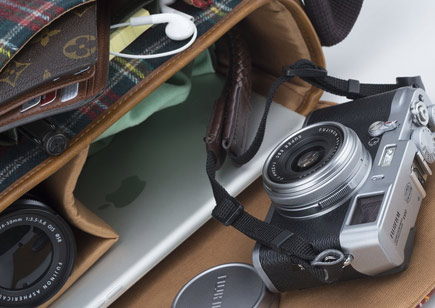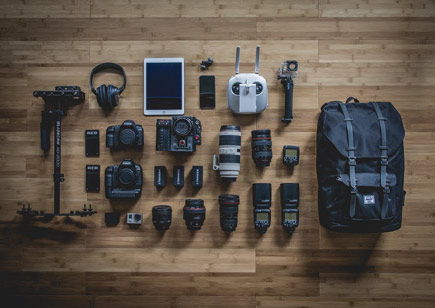Information on Flying with a Camera

Flight Search in Progress
Scanning the skies for available flights...
- Airlines will always try to sit children with their parents (subject to check-in)
- Some airlines will allow travel for unaccompanied minors. Please email us to check.
- The fare is based on the child's age on the date of travel.
- More detailed information can be found here Traveling with children
- Most airlines will let infants travel with their parent(s) for free. However some airlines will charge up to 10% of the adult ticket price. Click on 'Price Breakdown' to find out more.
- If you are pregnant, but due before the flight departure date, please contact us once your baby is born and has a name. We can then add him/her to your ticket.
- Infants will not be given a seat. The airlines expect parents to travel with them on their lap.
- Airlines regard infants as being under 24 months old.
- The fare is based on the child's age on the date of travel.
- More detailed information can be found here Traveling with children
Flying with a Camera
Find out if you can fly with a camera, where to pack it and different airline rules surrounding camera and camera gear on a plane.
Packing Camera Equipment
![]()
Cameras and all its gear and equipment are expensive and valuable things. Flying with them can be a nerve wracking time, as they are exposed to greater risk of damage Follow our tips for travelling with a camera to reduce risk to your valuables:
Where to pack Camera Gear
Digital Cameras
According to the TSA, digital cameras can be transported in both carry-on luggage and checked luggage. However, because cameras are fragile items, we recommend you always pack them in your carry-on luggage. This is because suitcases which go in the hold often get damaged and thrown around in transit, and any fragile cameras inside may get damaged or shattered. You’ll still want to ensure that your camera is packed tightly in protective wrapping. If possible, make sure that your camera bag is small enough to not be asked to be checked luggage as this puts your equipment more at risk you may get charged extra to check a bag at the airport.

Tripod and Cleaning Kit
Due to restrictions on taking liquids in hand luggage, we recommend putting any cleaning products in your checked luggage. Tripods should also go in here as they are large but not delicate, so won't take up space in your hand luggage.
Camera Batteries
To be able to use your camera at your destination, you’ll be wanting to bring extra camera batteries with you. However, airlines, airports and countries all have specific rules about batteries, so ensure you check with the relevant authorities to check that you adhere to regulations to avoid your camera and its batteries being confiscated. For example the TSA limit lithium batteries, and some airports, such as those in India, may require you to remove the battery from your camera when travelling, whereas other airports may ask you to keep the battery in to prove that it is a working camera. Therefore, it is best to check the rules and regulations of the airport and country that you are travelling to.
Also, make sure you pack the camera batteries securely and separately so that they do not come into contact with each other and short circuit and become a fire hazard. Lithium batteries are prohibited in checked baggage, so must be transported safely in your carry-on bags.
Lenses
Only take what is necessary. Weight of lenses can easily add up and you may see yourself going over your bag limit. Try to find a lens that does everything, so you don’t require different lenses for different types of shots. Detach your lens from your camera to avoid damage from stress on the equipment, and pack it separately. You can purchase additional baggage if you plan to take more equipment with you.

Drones
If you are flying with a camera attached to a drone, you may be subject to further rules. You can read more about flying with a drone here.
Film
If you are flying with camera film, you may be aware that x-ray machines in security can damage the film. However, the TSA state that film under 800 ISO will not be damaged by the x-rays in airport security. However, as checked baggage goes through higher energy X-rays, it is recommended your film is transported in your hand luggage. Alternatively, if you are still worried about passing your film through the x-ray machine, some airports will allow you to skip this step and be hand-inspected instead.
Skip the inspection process
Okay, you can’t completely bypass security at the airport, but you can purchase a TSA Pre-check pass which allows you to fastback through it. If you are a frequent flier, you may benefit from this service, as the price pays off in the time you save. Read more about this service using the link above. In addition, you can purchase a Global Entry pass, which is more focused on customs when arriving at the airport, but also includes the TSA Precheck in the pass.
Flying with a camera
FAQs
Can I fly with a selfie stick?
Yes, according to the TSA a selfie stick can be transported in both carry-on baggage and in checked baggage.
Can I fly with a tripod?
Yes, the TSA states that you can fly with a tripod in both your checked and carry-on bags. However, we recommend transporting it in your checked bags as they are not delicate and could take up precious room in your carry-on bag.
Can I fly with camera film?
Yes, film can be transported in both hand and checked baggage according to the TSA. It is best, however, to transport it in hand luggage, where the security x-ray machine is not as strong and therefore not as damaging. In the best scenario, you will be able to skip the x-ray machine all together and be allowed to have your film hand inspected by security, but unfortunately this is not always available at airports.
Can I fly with a camera monopod?
Yes, the TSA allow passengers to transport camera monopods in both carry-on luggage and checked luggage. The TSA ask you to check with the airline that the camera monopod will fit in the overhead bin if carrying it in hand baggage.
Can I fly with a DSLR camera?
Yes, you will be able to fly with a DSLR camera in both your hand and checked luggage. However, if you are carrying it in your carry-on luggage, which we recommend, you should check with the airline that your camera will be able to fit in the overhead bin and not need to be gate-checked.
What are the rules of flying with a camera and batteries?
You are allowed to transport a camera in either your hand or checked luggage, as long as it follows airline rules and fits within the baggage size restrictions. Batteries must be carried in carry-on baggage, and you must adhere to individual airline rules
